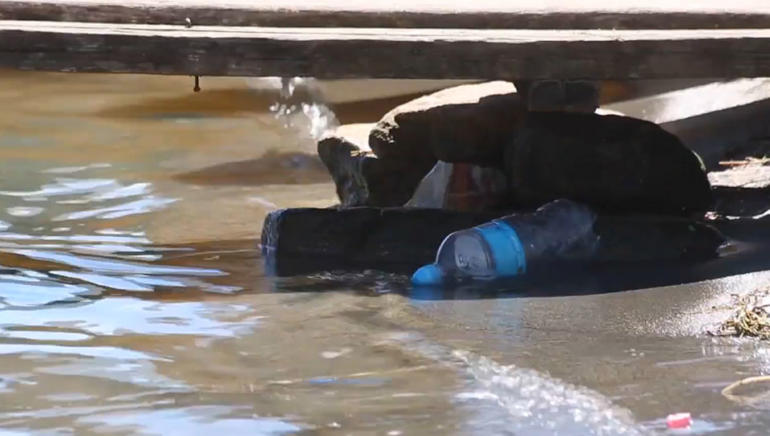Straddling the borders of Peru and Bolivia, is South America’s largest freshwater lake — Lake Titicaca. But today the once pristine body of water is blighted by pollution and it is a problem that both nations want to address. CGTN’s Dan Collyns repors from Copacabana, on the Lake’s Bolivian side.
A streak of iridescent blue marks out Lake Titicaca on the horizon. Historians say the lake was the cradle of pre-Hispanic civilizations, dating back thousands of years.
Their descendants still populate the lake’s shores, many fishing and farming just as their ancestors did, but much has changed. The Bolivian side of the lake now sees nearly 700,000 tourists visit every year.
According to the pre-Hispanic Inca civilization, Lake Titicaca’s deep blue waters were the birthplace of the sun. Now, its shores are littered with rubbish and, in its tourist hot spots, raw sewage flows into its waters.
While the hotels and tourist operators prosper, the local people rely on the lake for water, and say they’re suffering.
“The local person doesn’t want to drink water from the lake,” said Angel Rojas, the President of the Copacabana Drinking Water Committee. “There’s a lot of reasons, animals and fish are dying in the lake and the people are afraid. Now they take their water from wells or springs.”
Scientists say much of the pollution is domestic and industrial waste from the nearby cities of La Paz and El Alto-in rivers that drain into the lake.
Perched on Bolivia’s high plateau, El Alto’s population has grown to a more than a million in the last two decades. It pumps more than 300 liters of water a second into Lake Titicaca.
The mix of sewage, chemicals and heavy metals have stimulated growth of a harmful algae, which strangles life.
“This type of algae grows naturally due to the amount of nutrients in this place,” said Heydy Montecinos, a biologist. “But the pollution means there’s much more and when it grows it takes oxygen from the water so the other species die from asphyxiation.”
Scientists say there are not enough water treatment plants, and existing ones are not being used.
The lake’s pollution also means it cannot be used to irrigate crops or water livestock, which is a major blow in the local economy.
Eco-lodge owner Libertad Ortega is trying to rescue age-old farming traditions. She recycles materials and uses them to farm organically.
She says the lake is sacred and the source of life for the people.
“What we’ve seen has been devastating,” Ortega said. “Rivers of rubbish smelling of decay flowing into the lake. What we were able to clean up was nothing compared to the sheer quantity of rubbish we saw. The authorities just stood by and watched this disaster happen.”
With international aid, hundreds of millions of dollars have been poured into cleaning up this United Nations World Heritage site, and Peru and Bolivia say they are joining forces to combat the pollution but the question is if it will be enough.
 CGTN America
CGTN America

